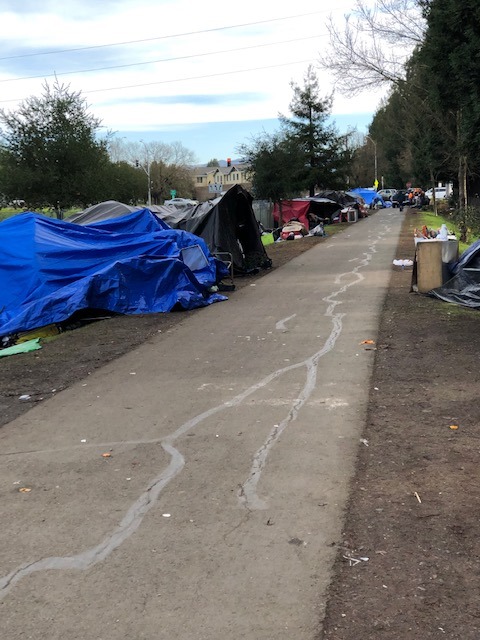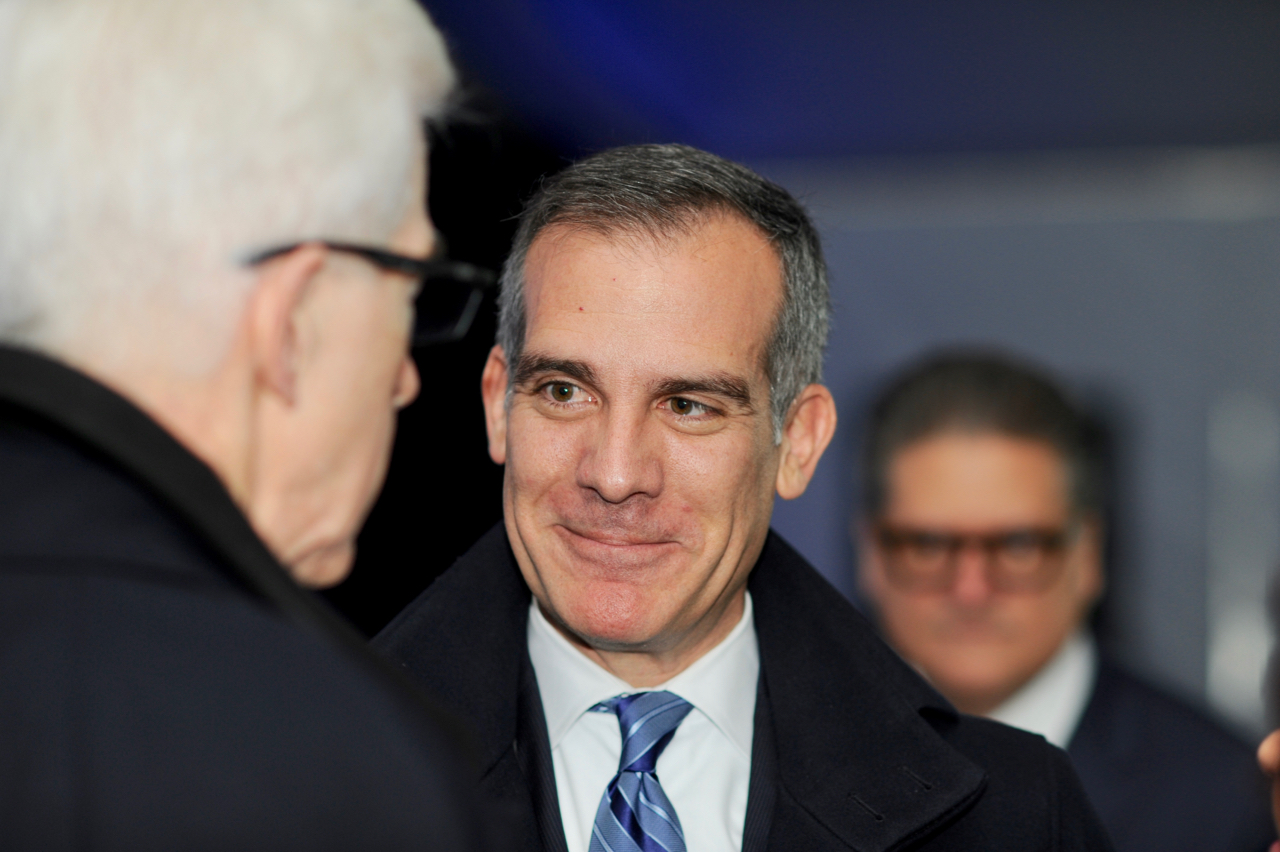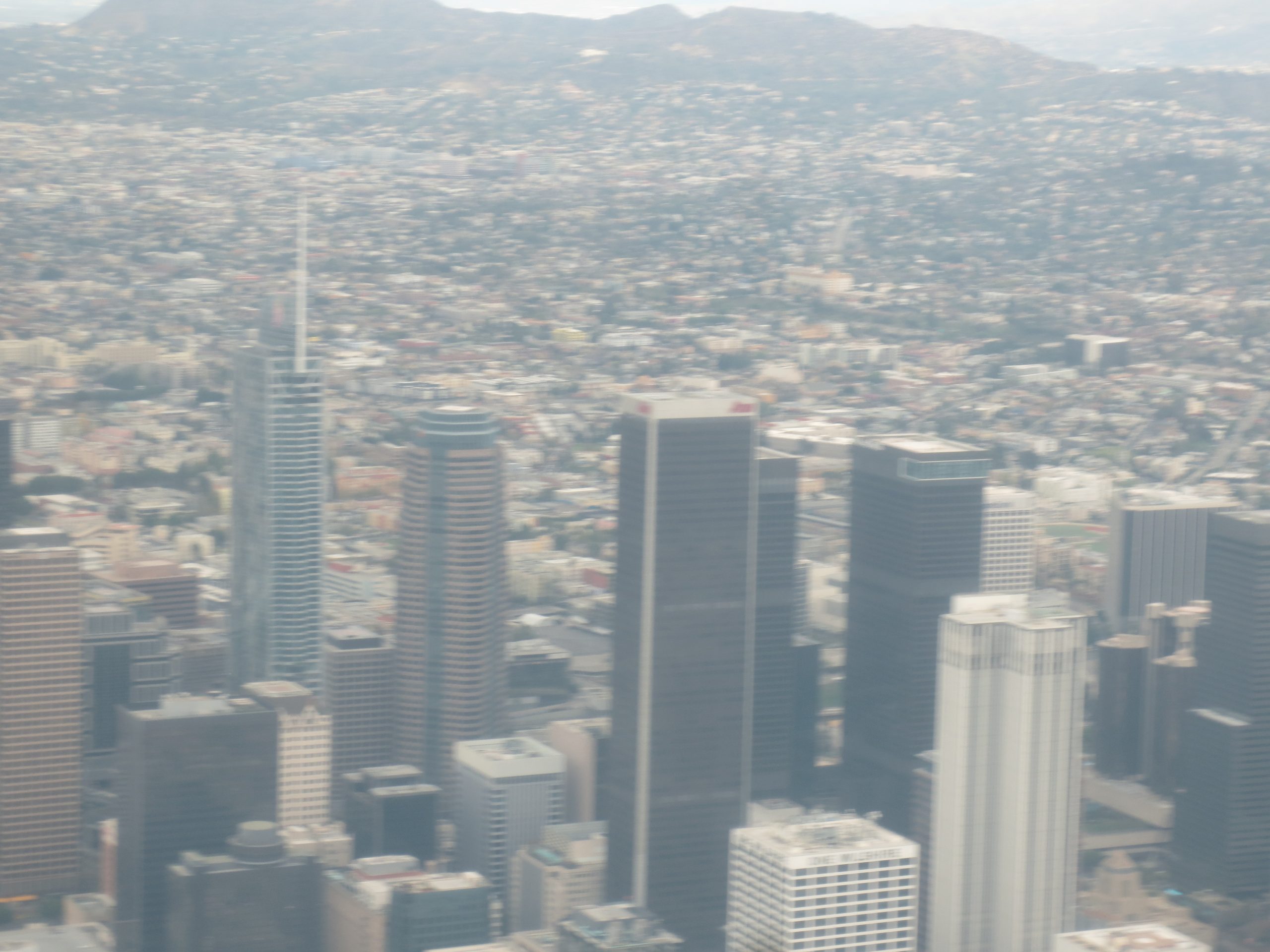
homeless on Joe Rodota Trail, Sonoma. (Photo: Facebook)
Los Angeles Homeless Look at a Lose-Lose Scenario During Coronavirus Pandemic
The cities most vulnerable people are also some of the most at-risk
By Evan Symon, March 22, 2020 8:05 am
While the COVID-19 coronavirus pandemic continues to sweep through California and the world, California’s homeless population faces a crisis that they have not yet seen on this scale before.
A “lose-lose” situation for the homeless in Los Angeles
In Los Angeles, a city that has been struggling with homeless rates for decades, the 60,000 homeless that call the city and county ‘home’ are facing mass infections, a higher than the normal 3-4% mortality rate of COVID-19, and virtually no protection in either housed or unhoused situations. Essentially, no matter what at this point, most are contracting it.
“It’s a lose-lose situation for them,” explained Sherri Radinsky, who has been volunteering at various Los Angeles homeless shelters for two decades. “If they live on the streets most congregate or share close-quarters situations in tents. They beg for money in places people usually are. Most don’t have access to soap and showers. And now, with restaurants closing and far less people to beg from, their nutrition suffers and any addictions worsen. Mentally it also gets worse. This all can harm their immune systems, making it all worse.”
“If they’re sheltered, then more sleep right by each other and more use the same bathroom facilities, some of which don’t have showers or adequate soap. A large number of them are also close by when eating, and there’s no way to tell who has it and who doesn’t.”
“There is no good option. And compounding that is that many non-profits, like a few I’ve worked with, could be closing soon due to lack of donations and the huge demand quickly depleting us. And many volunteers are now staying at home, many paid workers too.”
Old problems temporarily solved, new problems arising
Los Angeles and California both currently have stay at home orders following Governor Gavin Newsom’s announcement of a 56% statewide projected infection rate over 8 weeks. For the homeless, Los Angeles is creating more emergency shelters, many of which may be utilized from empty hotels and motels. The halting of evictions and a possible future halt on rent can also severely limit any possible homeless growth in Los Angeles and California. The Los Angeles Homeless Services Authority (LAHSA) has also been making large strides in shelter, hygiene, and several other measures to protect the homeless during the pandemic.
But despite these advances, new problems have arisen. New shelters have opened so slowly that some have taken over vacant houses. Public libraries, long a haven for the homeless, have closed across not only the city, but the entire county. Some homeless people in the state have already begun dying from the virus. Out of the estimated 108,000 to 130,000 homeless in California, the most conservative estimate for transmission currently stands at 60,000 for homeless people.
“It will be much worse than that,” said Ryan Cardinale, a nurse in Los Angeles County who often helps homeless patients. “We always know when we see one homeless person with a bad case of the flu that we’re about to see a huge wave. Whenever a bug or something goes around, the highest rates are always in homeless people. They’re much worse in numbers than even the elderly or kids in school.”
“There’s no such thing as safe distancing, both in the shelters and on the street. If you’re homeless, you can’t be isolated.”
“They’re just going to be hammered. You know, think about what you’ve seen in supermarkets. A lot of people have masks on, or are wearing gloves, or at the very least are using sanitizer and soap before and after visits. It’s not 100%, but it definitely makes contracting it much, much more unlikely. For the homeless, they don’t have that. Let’s say 50,000 homeless in and around LA get this, which still might be too low an estimate here, and let’s go 90,000 statewide. Knock off 4% due to deaths from the virus, and maybe 1-2% more due to complications coming from shortages and an overburdened healthcare system. Also, maybe another 1% from those not making it cold turkey from addictions or not being sheltered properly. You do the math. It’s not pretty.”
“Too little, too late”

This is such a large looming issue that Governor Newsom has even addressed it in recent press conferences.
“People experiencing homelessness are among the most vulnerable to the spread of COVID-19,” stated Governor Newsom at a press conference earlier this week. “Helping these residents is critical to protecting public health, flattening the curve and slowing the spread of COVID-19.”
But, as of now, the homeless coronavirus situation is dire.
“We’re finally seeing the shelters and the health measures and the stoppage of homeless camp sweeps, all of which we’ve been asking for years,” said Radinsky. “But the sad thing is it’s too little, too late. We might cut it by some, but it’s still going to hit most homeless people, many of whom, remember, don’t want to go to shelters in any case.”
“We waited too long to do anything when there wasn’t a disease, and now they’re going to pay the price for it.”
- Bill to Require Law Enforcement Disclosure if AI Was Used To Help Write Reports - August 7, 2025
- Gov. Newsom Files FOIA Request To ‘Expose True Cost’ Of L.A. Federal Troop Deployment for Anti-ICE Riots - August 6, 2025
- California Redistricting: How Newsom’s Plan Will Demolish Hard Fought GOP Gains - August 6, 2025





The vast majority of homeless has made personal choices to stay homeless instead of taking advantage of myriad of state and local options to get off the street. It doesn’t mean we should be in-human about helping them, but we need to acknowledge where the responsibility lies. These folks will never get off the street unless they choose to do so themselves.
Also, the mortality rate from COVID likely nowhere near 3-4%.
When this is all said and done, the homeless numbers will have been barely affected is my guess.
I agree with you. The vast majority of homeless people is because they desire to have a carefree lifestyle and enjoy their addictions to alcoholic beverages and controlled substances. I have talked to them and they will brag how they can make over $100 a day plus get free meals and clothing from strangers.
“We waited too long to do anything when there wasn’t a disease, and now they’re going to pay the price for it.” Where has she been? Disease is rampant in the homeless encampments in LA and elsewhere, even to the point that medical professionals predicted the bubonic plague would raise its ugly head. She did tell the truth about this though: the homeless LIKE where they are and don’t want to go to shelters, or anywhere else.
I work in homeless services in L.A. County. Many of our homeless clients have tried to get into shelters but were turned away due to shortage of beds or clients’ reasonable unwillingness not to part with homeless relatives, partners, pets, almost the last of their few belongings (as shelters often significantly limit how much people can bring in—could you put all your belongings in one backpack?). Also people are afraid of being robbed, beaten, raped, and contracting contagious diseases inside shelters. The VAST majority of homeless people do NOT like to lie on dirt or concrete every day—dangerous. dirty, and painful.